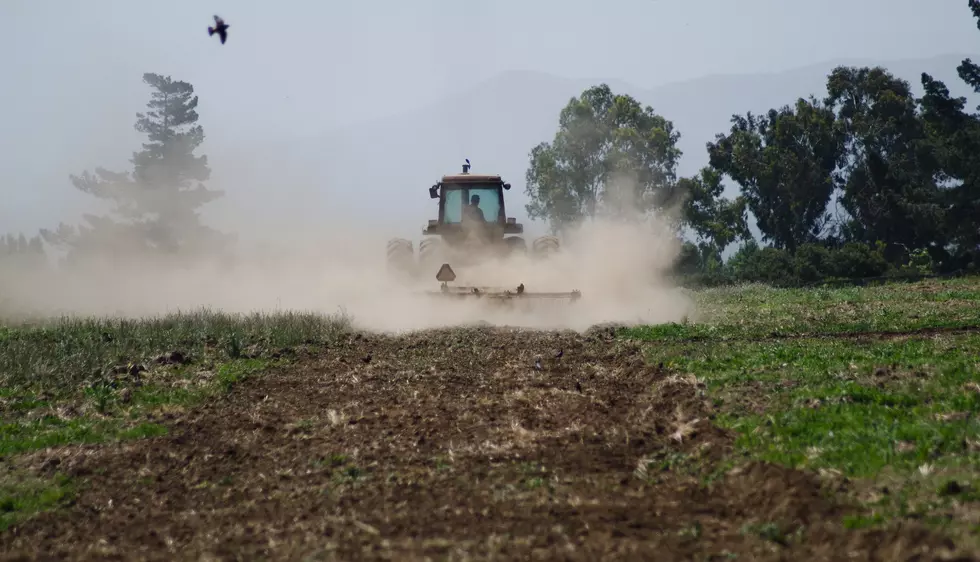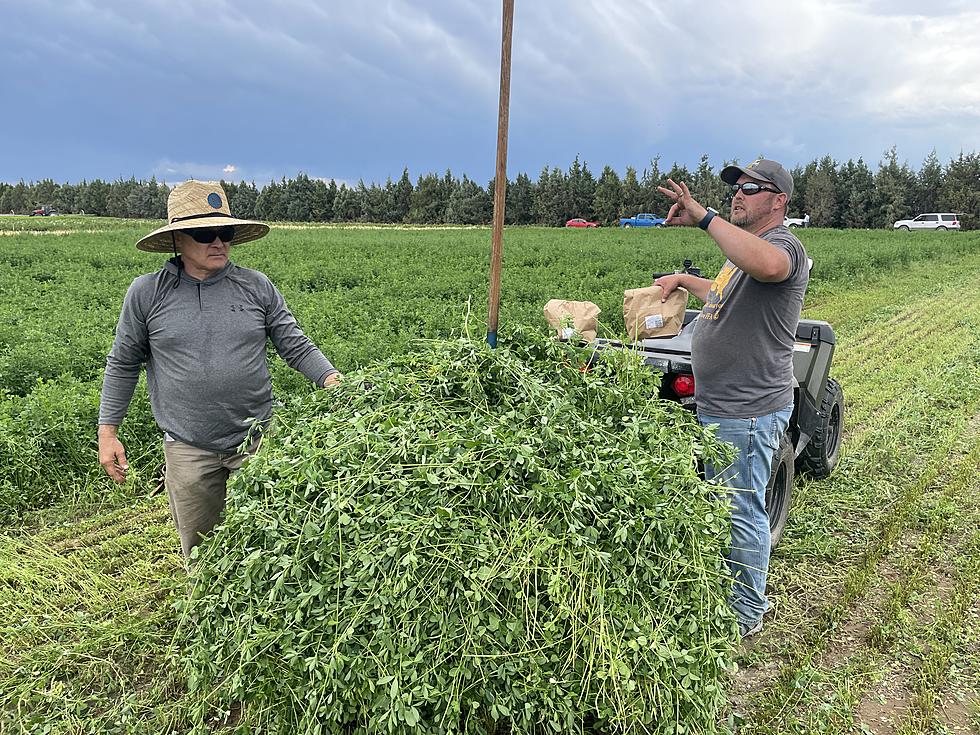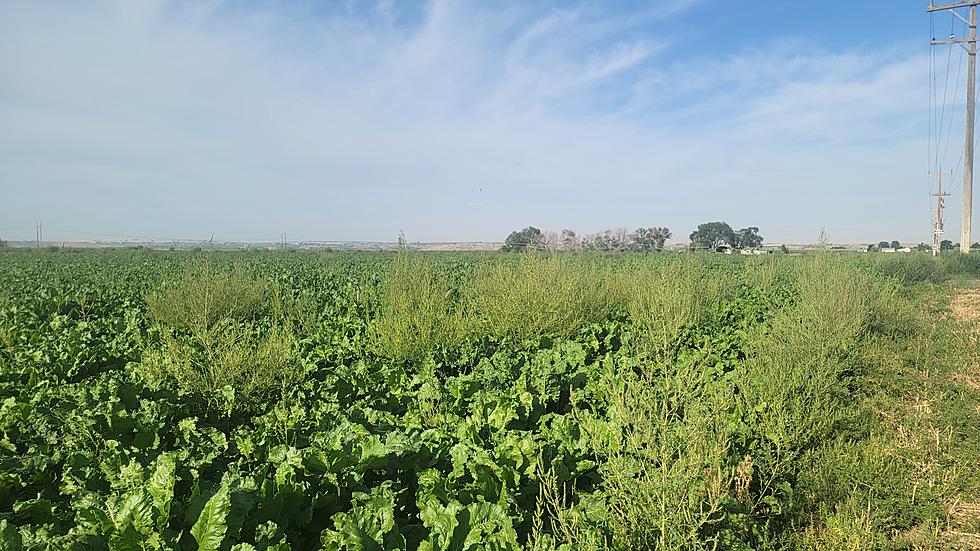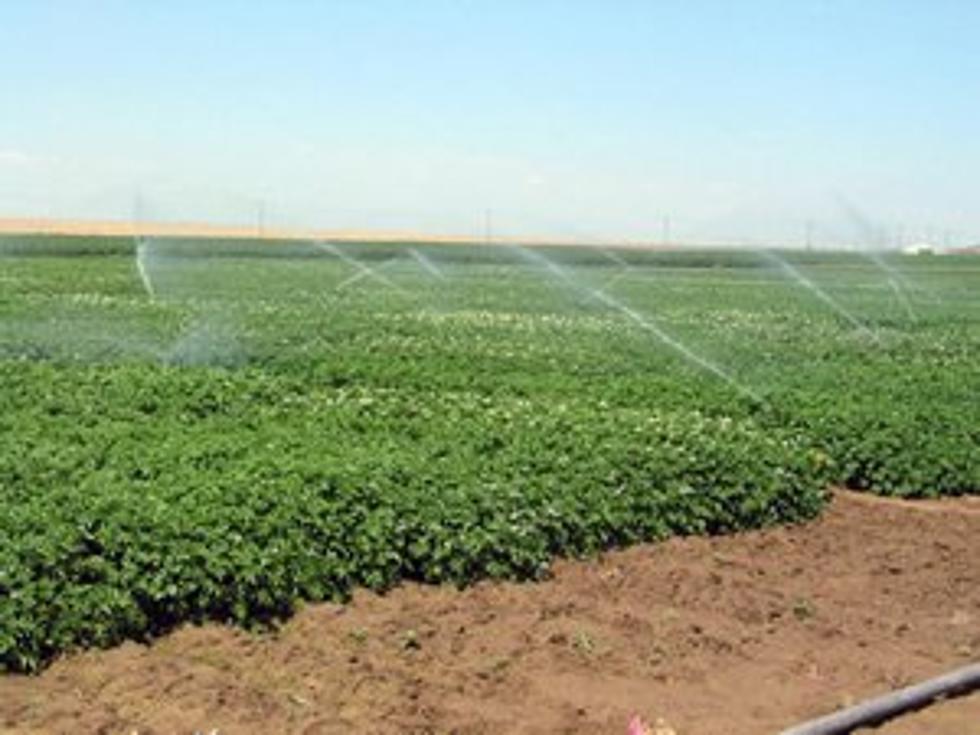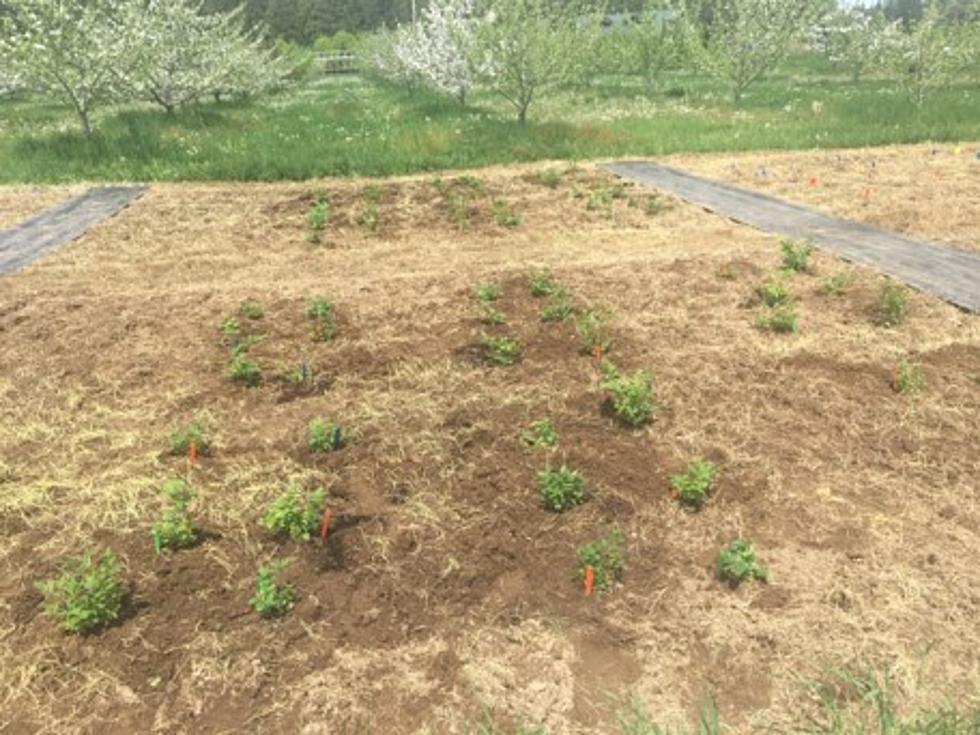
Taming Challenges of the Huckleberry
MOSCOW, Idaho — Idaho’s state fruit isn’t commercially produced, nor are there any domesticated huckleberry varieties available.
Native to the Northwest, huckleberries are mostly harvested from wild plants growing within Idaho, Oregon, Washington and Montana public lands.
U of I Professor Stephen Cook, head of the Department of Entomology, Plant Pathology and Nematology, has been working to overcome significant hurdles to huckleberry propagation. Cook is in the fourth and final year of USDA-funded research to organically protect greenhouse-raised huckleberry starts from a destructive pest, called the black vine weevil, in addition to studying ways to boost survival when those potted plants are transplanted into residential yards or the wild.
The research team also includes Randall Brooks, a UI Extension forestry professor, and Andrew Nelson, director of the Franklin H. Pitkin Forest Nursery, which is located on the Moscow campus and operated by the College of Natural Resources.
Cook is also leading a second huckleberry project that started in 2022 with funding from a three-year USDA grant. He’ll be testing how the addition of biochar, which is a type of charcoal produced from plant matter, affects huckleberry starts planted in the wild, as well as which pollinating insects are drawn to them.
One of the reasons huckleberries have been so difficult to domesticate is because they are finicky about their growing environment, preferring acidic soils and partial shade. They’re often found in clearings within conifer forests, which have been growing denser due to decades of fire suppression.
“We are starting to see a decline in the stands and the harvest,” Cook said. “Some of that is due to the changing of the forest canopy above them, which may also impact pollinators’ ability to find those plants.”
The Pitkin Forest Nursery, which is Idaho’s state nursery, produces roughly 500 huckleberry plants per year, most of which are purchased directly by homeowners for landscaping. It sustains significant losses in many years to black vine weevils, invaders from Europe that also target many hardwoods, conifers and shrubs propagated at the facility. Weevil larva feed on roots, and greenhouse plants may be unsalvageable by the time they are discovered.
“We’ve had years where we’ve found thousands of them,” Nelson said. “They can easily decimate the crop.”
At the request of regional greenhouse growers, Cook began studying three different organic methods for controlling black vine weevils in the U of I nursery starting in 2020. Treatments of neem oil, which is an insect growth regulator that prevents immature weevils from molting, and a type of fungus that attacks weevils both controlled about 85% of the pests in the pots. Introducing a type of nematode
that feeds on weevils was the most effective treatment in his study, controlling about 95% of the weevil population. All three treatments are commercially available.
Simulating varying degrees of weevil damage, Cook and Nelson removed 25%, 50% or 75% of biomass from huckleberry starts and planted them outdoors to assess their health and survival.
Cook and his team have also planted huckleberries both with and without biochar added to the soil at the U of I Sandpoint Organic Agriculture Center. Cook hypothesizes that the biochar will lend nutrients and improve soil-moisture retention, boosting survival in a Sandpoint environment with less soil acidity and more direct sunlight than huckleberry bushes can typically endure. They’ll be monitoring survival, plant chemistry and color of the samples.
The second project, which runs from 2022 through 2025, entails planting greenhouse-raised huckleberry starts adjacent to wild stands throughout Idaho’s northern Panhandle. Cook will plant the greenhouse-raised huckleberry starts with biochar. He’ll be comparing the color, chemistry and future pollination of transplanted huckleberry plants with the wild ones. Periodically he and his students will be netting insects to identify direct associations with insect pollinators. Cook will keep a close eye on the huckleberry blossoms to determine if biochar causes them to change color, which could affect insect pollination.
The first huckleberry project, “Integrating Plant Physiology, Insect Management and Extension Strategies to Improve Survival of Nursery Stock,” award No. NR4435, runs from 2020-2024 with a $298,420 grant from the USDA National Institute of Food and Agriculture’s Critical Research and Extension Program, of which 100% is the federal share. The second project, “Identifying Huckleberry Pollinators and the Impact of Soil Amendment Treatments,” award No. AN6545, is funded with a three-year, $200,000 grant from the Northwest Center for Small Fruits Research, which is a USDA-ARS research-led consortium funded by the USDA, of which 100% is the federal share.
Source: University of Idaho Extension
5 Annoying Washington State Weed Types That’ll Destroy Your Yard
More From PNW Ag Network


